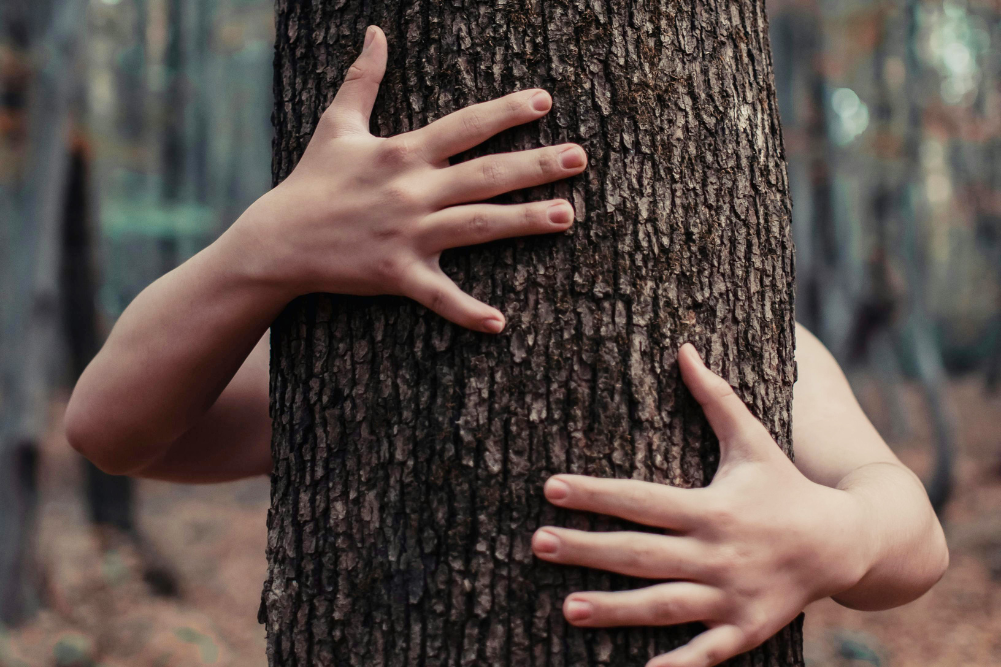What is biodynamic farming?
Biodynamic farming is a term we see more and more each day. In Australia, biodynamics is a rapidly growing niche, while in Europe and the UK (and, to some extent, the US) it’s much more widely accepted and practised. To define biodynamics means going into its history and giving some explanation of its modern-day interpretation. To suggest it is a rigid code of farming is to miss the point of biodynamic agriculture.
In the early 1900s, many European farmers were experiencing a loss of production. Years of conventional agriculture using artificial inputs had stripped the soil of nutrients and the loss in vigour had become a run-away situation. Crops were failing, seed strains were so weak as to prevent re-seeding from a previous year’s crop and the yields were too low to support the farmers.
Rudolph Steiner was approached for help by a group of German farmers and in 1924 he gave a series of eight lectures on “Bio-dynamics†at Schloss Koberwitz in Germany (now in Poland). Steiner’s Bio-dynamics were a combination of agricultural methods and spiritual concepts that formed a holistic approach to farming.
Steiner suggested that farms should be treated as entire eco-systems, within a greater eco-system, with positive links to and influences on each other. So, if the vigour of one plant within the eco-system suffered, it was a symptom of a problem with the whole system, not just that particular plant.
Further, Steiner went on to suggest that, since all the components of the eco-system contributed to the eco-system’s health, any missing components would lead to imbalances in the soil and the plants growing within it. For example, a soil growing only one plant type would use only one specific set of nutrients and minerals, which would become rapidly depleted. Over time, the only plants to flourish in this unbalanced soil would be weeds, which would compete with the desired crop for nitrogen, minerals and water.
Steiner’s lectures make difficult reading. Between the translation from German to English and some of his wilder concepts, they can be a real challenge to understand. It takes some time working with his basic principles and seeing the results before they begin to make sense.
Biodynamic farming is open to personal interpretation , which, from a modern perspective, makes it hard to define. Although initially overwhelming to a beginner, biodynamic principles are the tools with which farmers can revitalise their own farms.
There are no magic recipes, exact numbers or strict rules to offer an instant perfect solution. Biodynamics encourages farmers to look at their own situations, read the symptoms presented by their farms and apply the appropriate means to achieve a healthy eco-system.
Certification
In defining biodynamic farming, it’s necessary to discuss certification. This is a contentious issue, though, with many valid arguments for and against. Certification bears a certain cost, which is usually built into a higher-priced product. This covers a fee for the certifying label, a fee for membership of the certifying agency and a fee for audits of the farm.
It’s up to you as the end consumer whether you are prepared to pay the extra. I personally feel it’s important to label a biodynamic product as such because it has been farmed and made differently, with a greater focus on quality (usually with a trade-off in cost ) and may have significant health and allergenic benefits to the consumer.
However, if a product is to be labelled “Biodynamicâ€, I believe it is then very important to adhere to a basic standard for the term to have any market integrity. To achieve this, a certifying agency gives an unbiased guarantee that the product has been farmed and made according to that agency’s standards. Usually, this refers to chemical inputs and the use of 500/501 preparations, which we will get to shortly.
For some, the label â€Biodynamic†without certification is simply a marketing term that gives them the freedom to bend the rules a little; in hard years, they have the option to fall back on the chemicals that are banned by biodynamic certifiers. As the consumer, it’s up to you to decide whether that’s good enough. If you have strong feelings about chemical inputs into farming and into your body, then certified products may be perferable.
In Australia, there is a multitude of certifying agencies. All offer slightly different services and focuses. Some agencies are tied into Australian Quarantine (and through that International Federation of Organic Agriculture Movements, or IFOAM), so their certification is recognised worldwide. This helps with exports (especially to the stringent European Union) and mostly means their certification standards are more strictly enforced.
All agencies require different â€transition†periods before a product may be labelled â€Organic†or â€Biodynamicâ€. In the case of Lark Hill, our certifying agency stipulated that we must farm for three years using biodynamic practices before we could label anything “Transition to Biodynamic†and a further two years before claiming full “Biodynamic†certification. Other agencies may require as little as six months between commencement and full certification, so it’s worthwhile doing your research.
How is it different from organic?
Many people attempt to define biodynamics as something like “Organic Plus†and, while their intentions are good, this is perhaps an over-simplification. In some ways, they share similarities, but I believe biodynamics offers a holistic farming effort that goes beyond the capacity of organic farming to improve the quality of a crop.
In terms of chemical use, organic and biodynamic farming start at similar points: both seek to address plant health issues without systemic chemicals, which would be present throughout the plant after absorption into the sap. However, biodynamics encourages the use of natural means to address these problems rather than simply using “organic-approved†chemicals. At Lark Hill, we have used milk sprays as an alternative to copper and sulphur fungicides, which in turn are organic alternatives to systemic fungicides. The biodynamic farmer attempts to address the cause of the symptoms rather than mask them with a â€band-aid†fix.
Biodynamic farming also differs from organic in the application of a spiritual sense, which is usually where people find biodynamic farming requires a leap of faith. Biodynamics attempts to integrate some spirituality into a farmer’s approach, asking the farmer to think about the life force and energy of the organisms and eco-systems they are helping.
From the perspective of my scientific background, my interpretation is this: if the farmer is happy and has a passion for their work, the end result is a crop or product born of happiness. I have been to plenty of vineyards where the ground is burnt with sprays, the land cleared of trees and the vines stressed to produce a huge, unbalanced crop. A product of this type of environment lacks the vitality and vibrancy seen in biodynamic produce.
What does a biodynamic farmer do?
In a modern interpretation, the biodynamic farmer has a lot of tools to work with to improve a farm. Let’s start with the “preparationsâ€. Steiner introduced nine preparations, 500–508 in his lectures, each of which has a specific role within the farm.
But before we go into the detail of the preparations, let’s talk about the use of cow-horns as containers. At the time of Steiner’s work, this was perhaps the easiest container for farmers to use — it would not rust, rot or compost with the contents and was readily available as a waste product in cattle farming. In a modern setting, the horn still remains the best vehicle for making preparations. Several studies have been published comparing production of 500 in cow-horns, bull-horns, stainless-steel jars, glass jars and pottery urns. The end result is always better in the cow-horn.
500
This is perhaps the best-known biodynamic preparation, the fermented cow-horn manure. The manure from a lactating cow is placed in a cow-horn and buried over winter, where it ferments and composts. The end result is something that looks and smells like potting mix and is amazingly rich in important soil microbes.
A small amount of 500 is stirred into lukewarm water and aerated for an hour (either by hand or in a series of whirlpools called a flow-form) before being sprayed onto the soil of the farm. Large droplets are important so that the preparation may be absorbed into the soil without evaporating.
The microbes in 500 foster a symbiotic relationship with plants, growing tiny hairs that invade the root-cells of the plants and swap nutrients for sugar. The massive surface area of the fungi (a single fungus may cover more than an acre of soil) means the plants are able to access previously unavailable nutrients — particularly important in Australia’s ancient, low-nutrient soils.
The size of these fungi gives a clue to the impact of systemic herbicide application in conventional agriculture. Spraying even a small area of a farm will cause widespread destruction of the soil fungi, resulting in the loss of one of the most important nutritional aids to farming.
501
This is a preparation of ground quartz, composted in a cow-horn over summer. When mixed into lukewarm water and sprayed onto the plant, the silica aids in the fixing of sunlight into the plant’s leaves and provides structure in watery young shoots, as well as intensifying the effects of the sunlight. 501 requires a leap of faith (for some) and some care in application. Incorrect timing and excessive doses can easily burn tender leaves. However, plenty of evidence exists of 501 aiding pre-harvest increase in sugar levels in fruits, including citrus and grapes.
502–508
These preparations cover a range of tonics to help with soil and plant health; however, they can be generally regarded as optional and not essential in this overview.
Biodynamics includes the use of moon phasing for activities around the farm, which in the past was commonplace in agriculture and still has many applications around tides, surfing, saltwater farming and commercial fishing.
Correct timing of sprays around moon phases can increase the effects of the spray, as the water-influencing forces are harnessed. In many biodynamic wineries, for example, winery activities are similarly phased: settling of solids from wine can be much easier if done in correct timing with the moon.
In addition, the astral forces can be taken into account in farm operations, giving particular crop focuses, such as fruit, leaves, flowers or roots. It’s an easy and persuasive demonstration to plant lettuces on a â€leaf focus†day and compare with similar lettuces planted on a â€root focus†day. The difference in results is dramatic.
Finally, the biodynamic farmer has a strong focus on composting. Recycling all waste materials from the farm, composting is a great way to replace what is taken out of the soil by plants. Composting is important for any farm inputs, as it sterilises any foreign seeds (through the heat of the ferment) and integrates the nutrients into the final compost mix that is applied.
Compost needs green matter (grass clippings or similar), water, a microbe starter and manure to be successful. In dry climates it helps to cover the heap with tarpaulins or organic mulch such as straw, which prevents drying out and cooling of the heap. Rock dust is crucial, as this replaces the trace minerals taken out in the harvest of the crop. The heap will need turning for aeration and it can be very informative to regularly measure its temperature.
Biodynamics and the environment
Almost all alternatives to conventional agriculture work towards helping to conserve our environment. Holistic approaches, such as biodynamic farming, offer the most effective efforts in this cause.
The first positive outcome is the reduction or elimination of chemical inputs. This reduces the long-term build-up of toxic chemicals in the soil of farms. While copper is an â€organic-approved†fungicide, frequent large doses can build up and become toxic to soil microbes, causing a flow-on effect as plant health (and therefore resistance to fungi) suffers, requiring greater and more frequent applications of copper.
With the reduction of chemical use comes the improvement of biodiversity and biomass within the eco-system. Microbes are able to re-colonise the soil and, with applications of 500, the soil comes alive with positive symbiotic fungi. This means plants are able to use more nutrients and utilise recycled nutrients from organic matter that is broken down. Nitrogen-fixing bacteria (Rhizobia) is able to grow in the soil and, along with legumes (such as clover), fixes atmospheric nitrogen into usable nitrogen in the soil, reducing the requirement for fertiliser applications.
The use of compost provides the necessary trace elements and replacement nutrients to top up the soil after each year, and also stimulates microbial growth, invigorating the soil further.
All this adds up to a farm with very few inputs or waste products, meaning a smaller carbon footprint as less fuel is burnt transporting goods to and from the farm, as well as disposing of waste products off the farm.
Biodynamic farmers are generally inclined to think about their mechanical impact on their farm. Most I have met work towards achieving multiple actions with each tractor pass, saving fuel, reducing compaction and often giving them sufficient time to achieve everything necessary to look after their crops.
Biodynamics is a fascinating blend of agriculture and spirituality, which has perhaps earned it an unfair mantle of mystery and cynicism. Biodynamic farmers are often thought of as partial to loincloths — and there certainly is plenty of room for far-out spiritual interpretation within Steiner’s work. However, you don’t need to spend too long at a biodynamic farm to feel and see the differences some simple steps make.
I have been farming with biodynamic principles for five years at the time of writing, coincidentally five years of deepening drought. In that time, the Lark Hill vineyard has gone from strength to strength, showing amazing resilience in harsh conditions. We now have no chemical inputs into the vineyard, yielding amazingly strong wild-yeast ferments in all the wines. We have incredible juice nutrition — there’s enough nitrogen to support full-length ferments without additions in the winery (an enviable rarity).
We have replaced herbicides with deep mulching as weed control — and gained water efficiency and drought resistance as a bonus. The soil is alive with microbes — mushrooms flourish throughout the vineyard in spring for the first time in 30 years — and the biodiversity in both insect and bird life increases every season. Additionally, we are now seeing the fruit achieve flavour ripeness at lower sugar levels, giving better acid balance, more vibrant colour and flavours and lower alcohol levels.
Finally, the Lark Hill vineyard is being conserved and with sustainable, biodynamic farming, I can be certain it will continue to flourish for future generations.
Rudolf Steiner
Rudolf Steiner was born in Austria on February 25, 1861, and died on March, 30, 1925. As a young man, he worked with the German poet, philosopher and humanist Johann Wolfgang von Goethe on some of his volumes, while still working on and publishing one of his own important philosophical works, The Philosophy of Freedom.
In the late 1890s and early 1900s, Steiner helped grow the Theosophical Society, lecturing throughout Europe on Spiritual Science before splitting from this society to form the Anthroposophical Society. However, his radical concepts and lectures caught the attention of the National Socialist movement in Germany and he was criticised by a young Adolf Hitler for being a Jew or a â€tool of the Jewsâ€.
Steiner constructed the Goetheanum in Switzerland, providing a place of learning as well as a venue for dramatic works such as Goethe’s Faust. But an arson attack three years after construction finished (and suspiciously close to Hitler’s public criticism of him and his philosophies) saw the Goetheanum destroyed, its replacement not completed until after Steiner’s death.
After the burning of the Goetheanum and continued unrest in Germany, Steiner left his residence in Berlin in 1923, fearing the worst should Hitler come to power. Steiner continued to travel and lecture during this time, but his frailty became evident and he gave his last lectures in September 1924, dying just six months later.
It was during this final phase of Steiner’s life that he conceptualised biodynamics, assembling a series of lectures from his lifetime of philosophical study. In his lectures, Steiner gave farmers a philosophical lesson in the life-force of an organism and the cyclical nature of an eco-system.
Eighty-five years on, biodynamics is a fast-growing farming method, with many of Steiner’s philosophies striking the right note with current conservation efforts. While Steiner may be known primarily for his education system, his contributions to the philosophical world, as well as to agriculture, are considerable and worthy of deeper study.
Chris Carpenter has a background in biochemistry and is now studying Wine Science & Viticulture, as well as making wine with his family.







